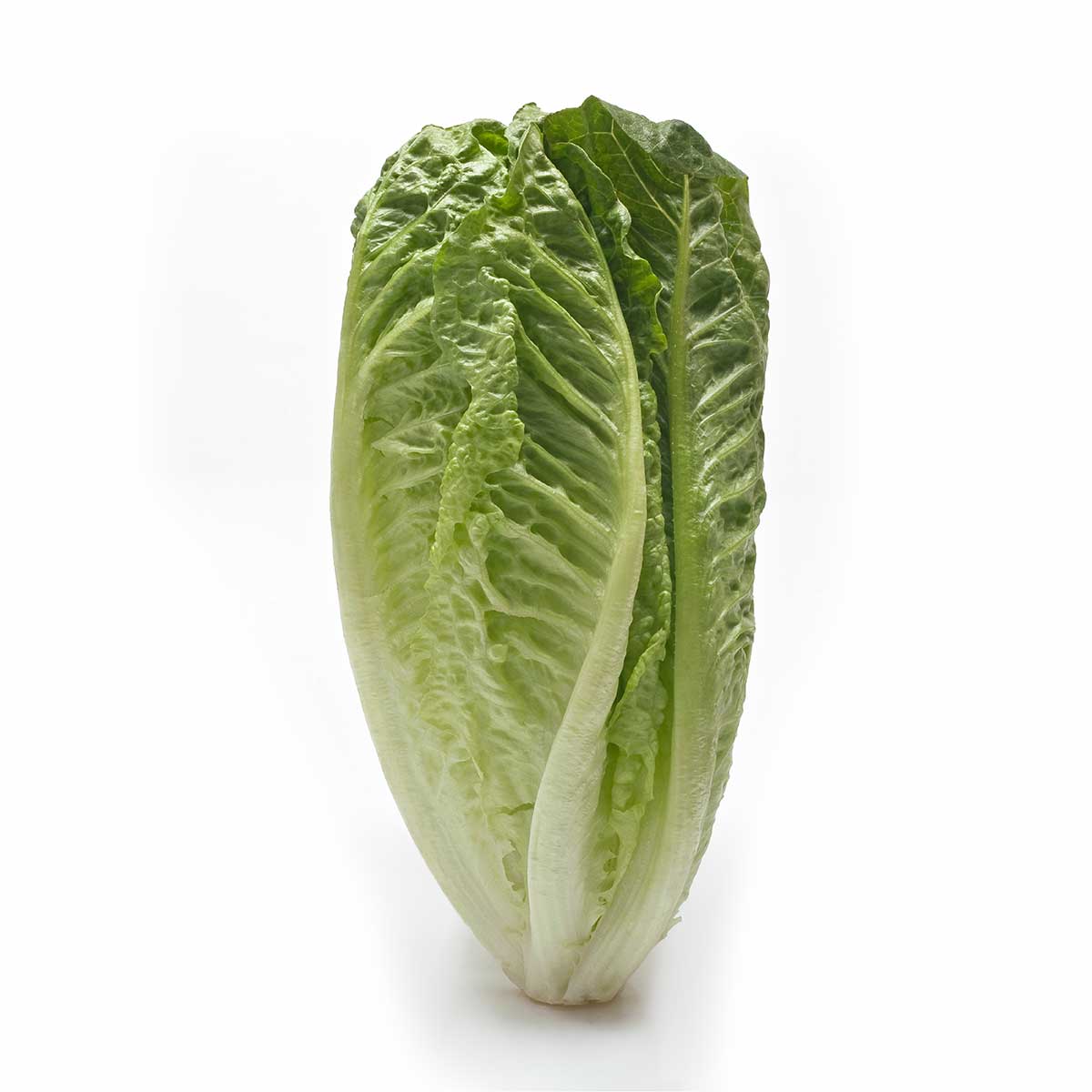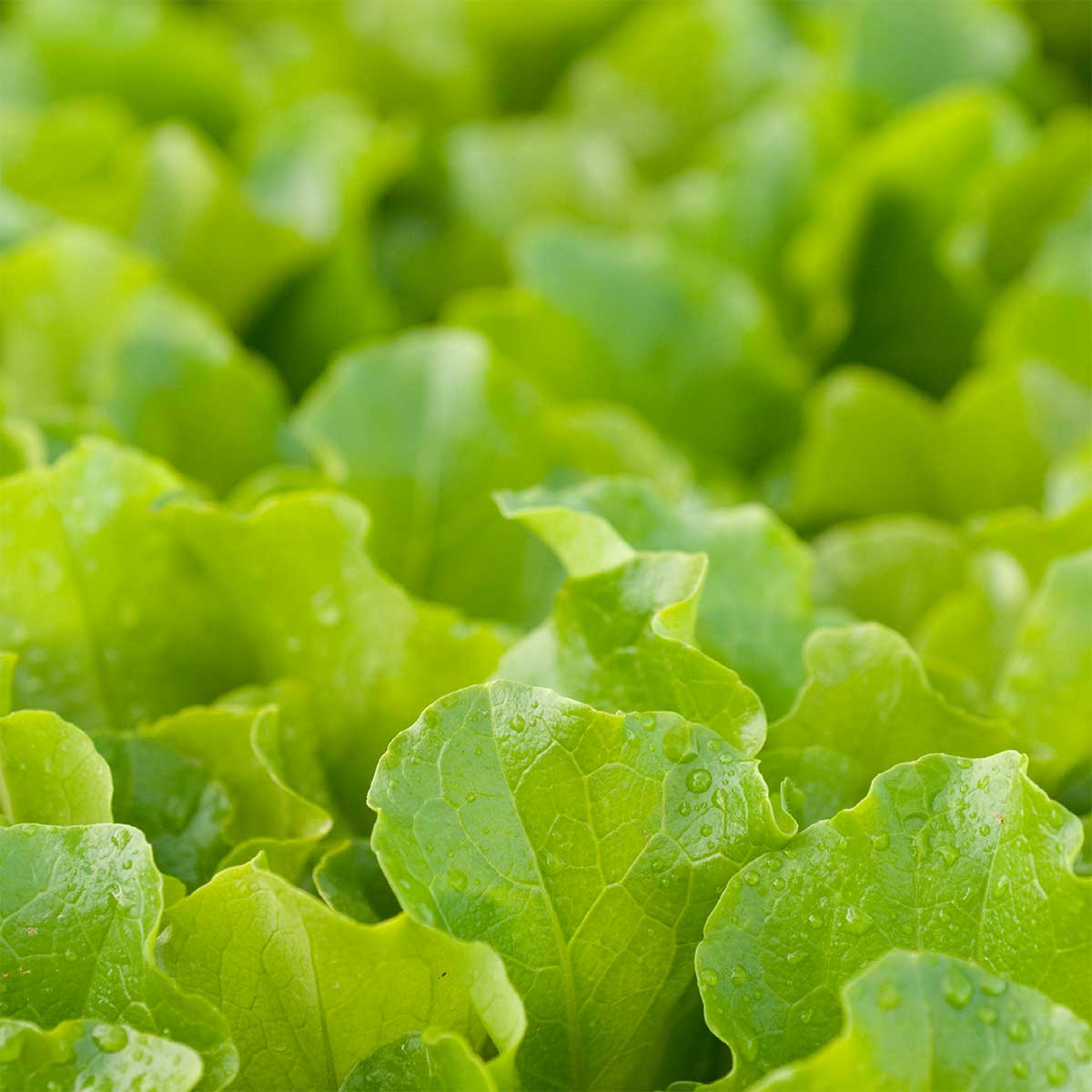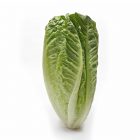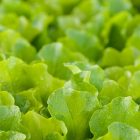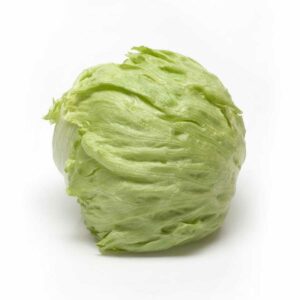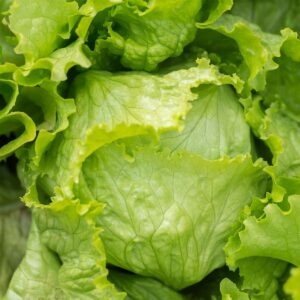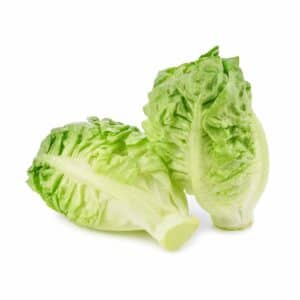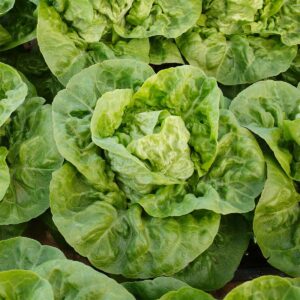Description

Romaine lettuce also called “cos lettuce” in other areas of the world, is a variety of lettuce from the longifoliate plant family Lactuca sativa L. var. Romaine lettuce grows on a tall head of stout leaves and has firm ribs in the centre.
Many sources trace the emergence of Romaine lettuce to the Greek island hundreds of years ago, where it first got its name from the island of Cos, where lettuce was first introduced. Romaine lettuce spread to Rome, where it was given the Italian name “romana”, coming from Rome. It is still consumed today in the Mediterranean region of the world and has become popular in other parts of the world, especially as a main ingredient in all salads.
It has a slightly bitter taste, which is why it is one of the most commonly used lettuces in salads. Romaine is used in Caesar salad. Romaine lettuce is used in the celebration of Passover and is a kind of bitter herb that symbolises the bitterness of the Jews when they were enslaved in ancient Egypt, it is a lettuce with history.
How to plant romaine lettuce?
Growing romaine lettuce is perfect for beginners; it is easily sown by seed directly into the soil as soon as the soil can be worked. Because lettuce grows quickly, it is best to plant a small number of seeds at a time, staggering the sowings.
Lettuces are a great leafy green crop because they grow quickly, produce for a long time and are not very demanding as long as the plants are kept sufficiently watered.
Plants should be spaced 12-18 inches apart; more space generally means larger heads. Transplanting should be done in cool, cloudy weather or early evening so that the transplants can spend the night in cool conditions.
It is important to consider the temperature when planting romaine lettuce seeds, as romaine lettuce is adapted to cool growing conditions. Optimum temperatures for growth are 16 °C to 27 °C, so that the plants will flower and produce seeds. Lettuce can tolerate some days with temperatures of 28 °C to 30 °C, as long as the nights are cool.
For maximum lettuce production, it is advisable to select a site where the soil drains well, but retains some moisture. This is best achieved by providing plenty of organic matter (compost, decomposed manure or mould) to loosen and enrich the soil. Most types of lettuces mature in 45 to 55 days, allowing many farmers to plant two or even three crops. In this case, romaine lettuce takes 75 to 85 days.
How to harvest romaine lettuce?
Romaine lettuce can be harvested as long as it is large enough to use. Many farmers peel the outer leaves and allow the rest of the plant to continue growing to extend harvest time. Before the first frost or really cold weather arrives, harvest the lettuces completely.
Lettuce is harvested before flower rise, about 2-3 months after sowing or transplanting.
You will know they have matured by their appearance: they will be dark green in colour, and look leafy and open. Unlike iceberg lettuce, romaine will not be thickly closed when ripe. As opposed to iceberg lettuce, romaine will not be thickly closed when mature.
- Tips to do the best harvest:
- Before harvesting, do not water the lettuce so that the head does not get water in it and comes out easily.
- Cut the lettuce at the base, flush with the ground, you can also loosen the soil around the lettuce and slowly pull it upwards.
When to harvest romaine lettuce?
Lettuce plants are cool weather crops for early spring or late summer planting. From the time we plant romaine lettuce seeds, they germinate at temperatures between 40°F and 85°F, usually in five to ten days, but sometimes they need as little as two days to start growing.
Romaine lettuce can be harvested about 50 days after sowing, you can tell because the head will be compact or closed. Carefully cut off the head at ground level and get ready to eat some delicious romaine lettuce!
Is romaine lettuce healthy?
Romaine lettuce contains numerous vitamins and minerals that are beneficial to health, being an easy food to introduce in our healthy diet.
Its nutritional value is as follows:
Water: 95%.
Carbohydrates: 1.5%.
Fibre: 1%.
Protein: 1,5%.
Lipids: 0,3%.
Potassium: 180 mg/100 g
Sodium: 10 mg/100 g
Phosphorus: 25 mg/100 g
Calcium: 40 mg/100 g
Iron: 1 mg/100 g
Vitamin C: 12 mg/100 g
Vitamin A: 0,2 mg/100 g
For this reason, romaine lettuce has a series of benefits that make it a fresh product, ideal for creating delicious and healthy recipes or for eating it raw, benefiting from the properties of its romaine leaves directly. These are the following:
- Contains a high amount of Antioxidants Vitamin A and Vitamin C: There are multiple health benefits of eating plants containing vitamin A and vitamin C, such as romaine lettuce, because the antioxidant vitamin A stops inflammation and oxidative stress, which can cause damage to tissues and cells. Just one 2-cup serving of romaine lettuce provides 164% of your daily vitamin A and 38% of your daily vitamin C needs.
- Romaine lettuce is a great source of vitamin K for bone formation, as green leafy vegetables are considered to be the best natural vegetable source of vitamin K.
- Romaine lettuce nutrition also provides vitamin A and vitamin C, two antioxidants that play a role in heart health by oxidising cholesterol and keeping arteries strong.
- Romaine lettuce provides nutrients that help defend against acne and inflammation, including vitamin A, vitamin C, potassium, B vitamins and more. In addition, the vitamin C present in romaine lettuce also helps form collagen in the skin, which is responsible for forming firm, healthy skin and preventing loss of elasticity.
- It helps fight cancer: Studies have shown that the pigment chlorophyll in dark leafy greens, such as romaine lettuce, may reduce the risk of developing certain types of cancer, including colon cancer and liver cancer. And studies show that diets low in leafy green vegetables are associated with an increased risk of cancer.
- It has a high fibre content: its high water, mineral and fibre content helps keep things moving throughout digestion and also helps eliminate toxins from your body.
How many calories in romaine lettuce?
Romaine lettuce is extremely low in calories, carbohydrates, sugar and fat, but high in nutrients and water content. In fact, there are only 8 calories in each portion of romaine lettuce. Because of its low-calorie density but high nutrient content, you can eat as much romaine lettuce as you want even when you are trying to lose weight.
How to store romaine lettuce?
The best way to keep romaine lettuce in optimal eating condition is to store it in the fridge. For best preservation, we recommend washing the leaves with fresh tap water and storing them in the fridge for up to 10 days, you can use a plastic bag to put them in. If you keep them dry in the refrigerator, the leaves should last for about 10 days.

